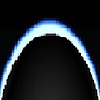HOME | DD
 archonom — Eagle Nebula and Pillars of Creation (2019-08-23)
archonom — Eagle Nebula and Pillars of Creation (2019-08-23)

#canon #capture #creation #eagle #eaglenebula #guiding #imaging #m16 #mgen #nebula #nebulae #newton #nightsky #pillars #science #scope #space #stars #telescope #pillarsofcreation #lagerta #amateurastrophotography #ic4703 #astrophotography
Published: 2019-08-24 09:46:50 +0000 UTC; Views: 2479; Favourites: 108; Downloads: 28
Redirect to original
Description
Eagle Nebula (M16) with the Pillars of Creation
The Eagle Nebula (catalogued as Messier 16 or M16, and as NGC 6611, and also known as the Star Queen Nebula and The Spire) is a young open cluster of stars in the constellation Serpens , discovered by Jean-Philippe de Chéseaux in 1745–46. Both the "Eagle" and the "Star Queen" refer to visual impressions of the dark silhouette near the center of the nebula,[3] [4] an area made famous as the "Pillars of Creation " imaged by the Hubble Space Telescope . The nebula contains several active star-forming gas and dust regions, including the aforementioned Pillars of Creation.
Characteristics
The Eagle Nebula is part of a diffuse emission nebula , or H II region , which is catalogued as IC 4703 . This region of active current star formation is about 7000 light-years distant. A spire of gas that can be seen coming off the nebula in the northeastern part is approximately 9.5 light-years or about 90 trillion kilometers long.[5]
The cluster associated with the nebula has approximately 8100 stars, which are mostly concentrated in a gap in the molecular cloud to the north-west of the Pillars.[6] The brightest star (HD 168076) has an apparent magnitude of +8.24, easily visible with good binoculars. It is actually a binary star formed of an O3.5V star plus an O7.5V companion.[7] This star has a mass of roughly 80 solar masses , and a luminosity up to 1 million times that of the Sun . The cluster's age has been estimated to be 1–2 million years.[8]
The descriptive names reflect impressions of the shape of the central pillar rising from the southeast into the central luminous area. The name "Star Queen Nebula" was introduced by Robert Burnham, Jr. , reflecting his characterization of the central pillar as the Star Queen shown in silhouette.[9]
Source: Wikipedia (en.wikipedia.org/wiki/Eagle_Ne… ).
About last night's imaging session
I just love this hobby! I was very excited when I saw the first captures of last night's imaging session.
Went home fast after work yesterday and managed to setup my telescope in no time. Unfortunately there were several issues: The Newton scope neded to be aligned properly and the screws holding the guiding scope were loose, so the guiding scope tended to move on several occasions which is actually pretty bad if you rely on a guiding cam to track a single star.
When I completed dealing with all the issues, I noticed that the night sky was brighter than it used to be in the last months. I guess that there are many summer events nearby, each of them throwing their light shows into the sky. In addition, the Eagle Nebula was already moving out of sight, so it had a very low altitude and was standing directly in the light polluted area of Stuttgart (thanks Stuttgart).
But I still thought that I should give it a try, this might be the last time in 2019 when this object could be imaged. In addition, I always wanted to capture the famous Pillars of Creation.
Plate solving went good this time, and so I was able to start imaging pretty early. Actually I captured far more than 33 images, but most of them were unusable because the guiding wasn't good when the object had its lowest possible altitude in the sky.
But: After stacking the best images, I was still very happy with the results. I guess you can see some parts of the Eagle Nebula, and the Pillars of Creation were very easy to capture, so you can see some details of them, too.
The final image has many technical flaws, I know that. But seeing the Pillars of Creation reminded me again why I love astrophotography so much <3
Some details for the astro nerds
Picture data:
- 33 x 150s (82,5 minutes total exposure time)
- ISO 400
Equipment used:
- 8 inch Newton with 1m focal length
- EQ6R Pro Mount
- Canon 1200DA
- Lacerta MGEN
Editing:
- Image stacking with Sequator
- Image stretching with Fitswork
- Some image editing with various tools
- Cropping with Windows Photo app ^_^
Related content
Comments: 13

👍: 0 ⏩: 1

Epic is when people give you positive feedback 
👍: 0 ⏩: 0

Danke und Grüße nach Österreich!
👍: 0 ⏩: 0























